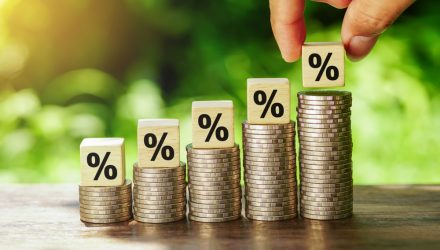Once a sparsely populated afterthought within the broader ETF industry, active ETFs are flourishing. That’s true both in terms of population and, more importantly, assets under management.
In fact, 2023 will likely down as a halcyon for active management in the ETF wrapper. That could be a sign that rookie active ETFs, such as the Calvert US Select Equity ETF (CVSE) and the Calvert Ultra-Short Investment Grade ETF (CVSB), among others, arrived at the right place at the right time. The funds launched in January as part of a broader suite of Calvert ETFs, including active and passive strategies.
Data support the notion that advisors and investors are flocking to actively managed ETFs. As of the end of October, that category of funds listed in the U.S. had $444 billion in combined AUM. That’s triple the level seen just three years prior.
Active ETFs Flex Asset-Gathering Muscle
One of the primary reasons advisors and investors are gravitating to actively managed ETFs is because structure matters. That is to say, they like active management. But they’re also increasingly aware of the advantages of the ETF structure over actively managed mutual funds.
“In the mad dash to ETFs, investors left actively managed mutual funds behind,” noted Morningstar analyst Ryan Jackson. “They suffered outflows in seven of the past eight calendar years, including a record $1 trillion exodus in 2022. That seems to indicate that active management is out of style, and active ETFs have thrived strictly because they’re ETFs—boats lifted by the vehicle’s rising tide.”
Said another way, ETFs typically sport lower fees and significantly reduced exposure to negative capital gains events than do actively managed mutual funds. Those factors confirm ETFs have a total cost of ownership advantage. That, over time, can improve outcomes for end users.
However, market participants may be leaning into actively managed ETFs for reasons beyond structure. Those reasons could support long-term growth for products such as CVSB and CVSE.
“The ETF structure is central to the rise of active ETFs (more on that later), but they are more than fortunate beneficiaries. Active ETFs represented 3.2% of the ETF market in October 2020 but went on to claim 14% of net flows over the next three years. If active ETFs merely rode the ETF vehicle’s coattails, their market share would not have swelled to 6.3% over those three years,” added Jackson.
Specific to the Calvert ETFs, environmental, social and governance investing in active form has the potential to ensure better ESG purity and reduced risk of greenwashing.
For more news, information, and analysis, visit the Responsible Investing Channel.

